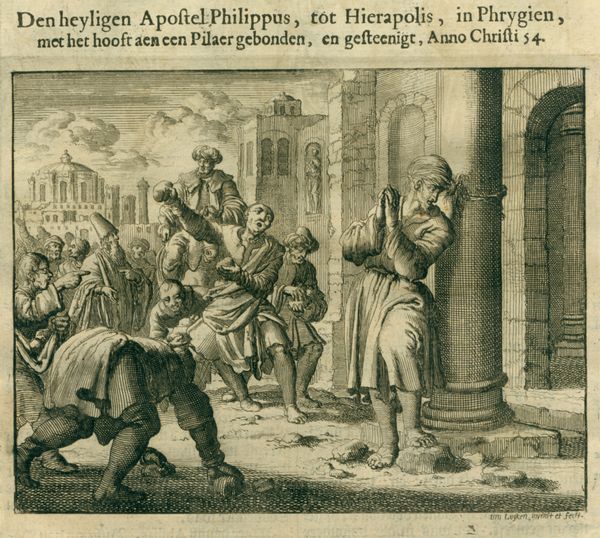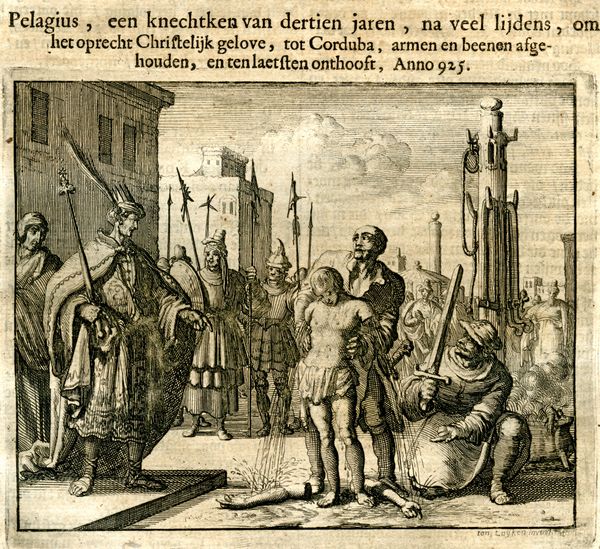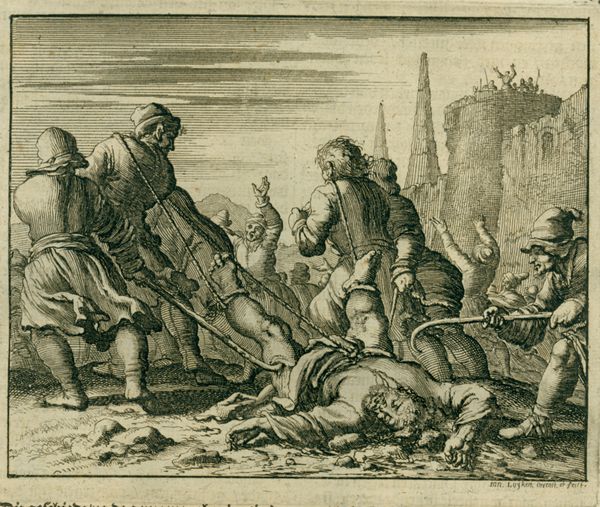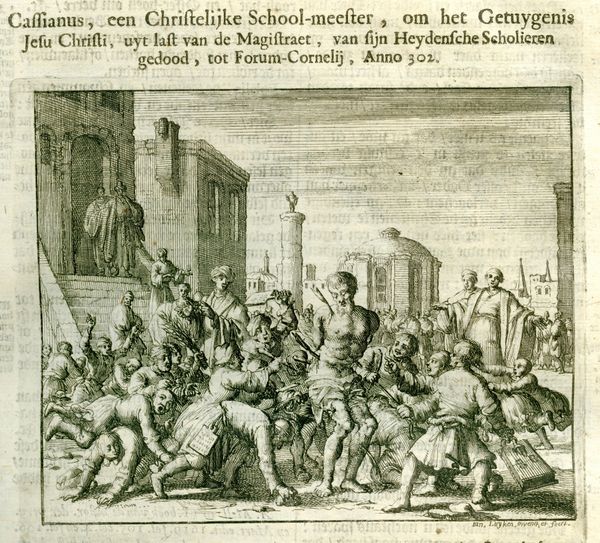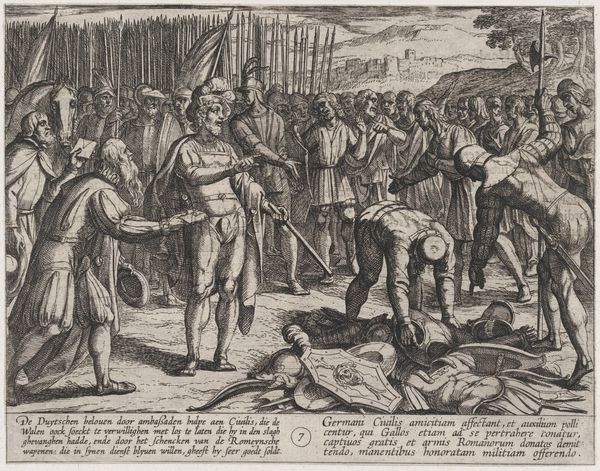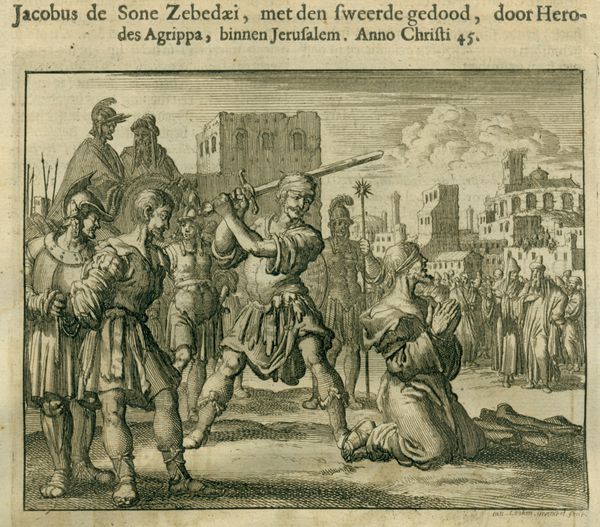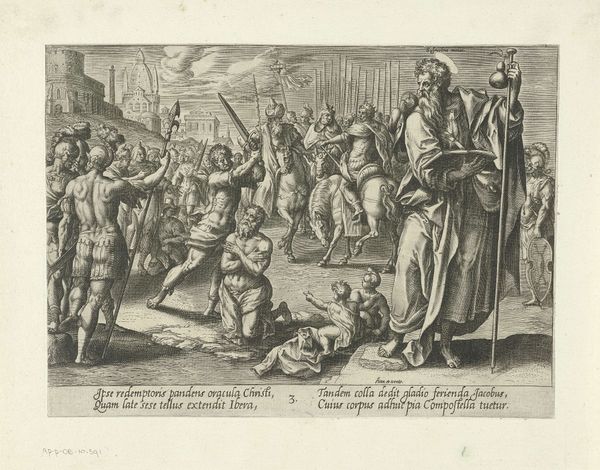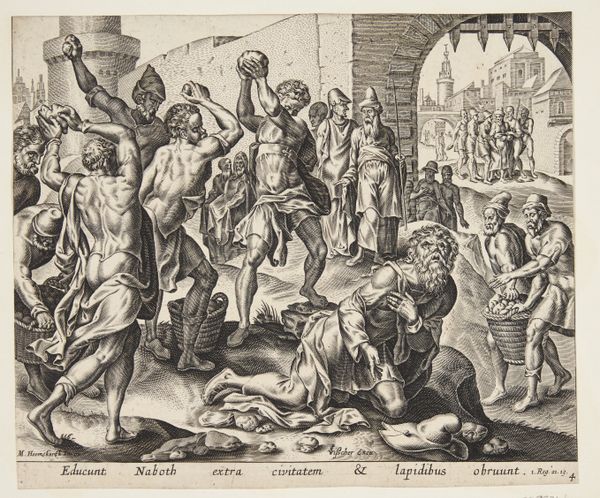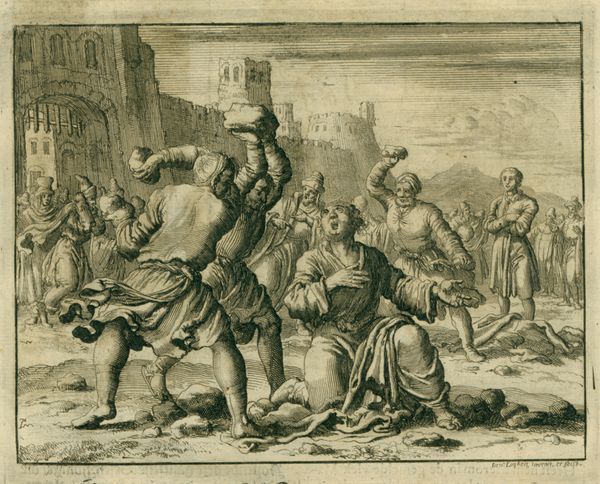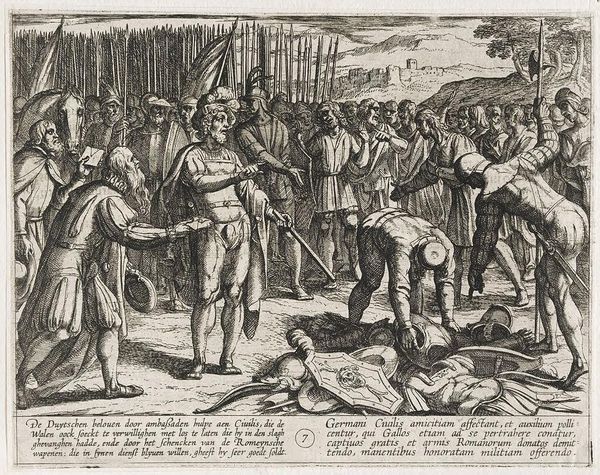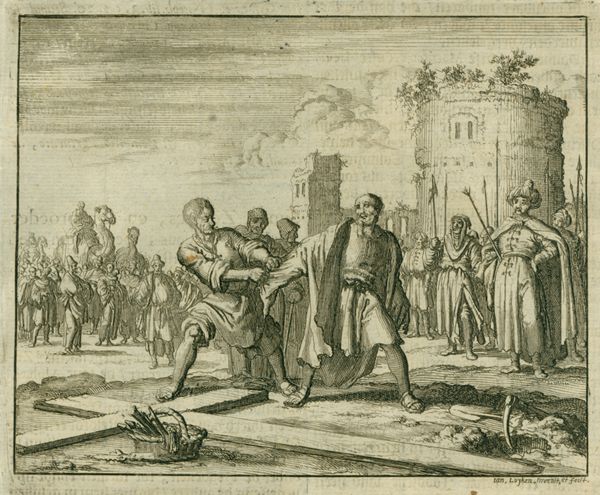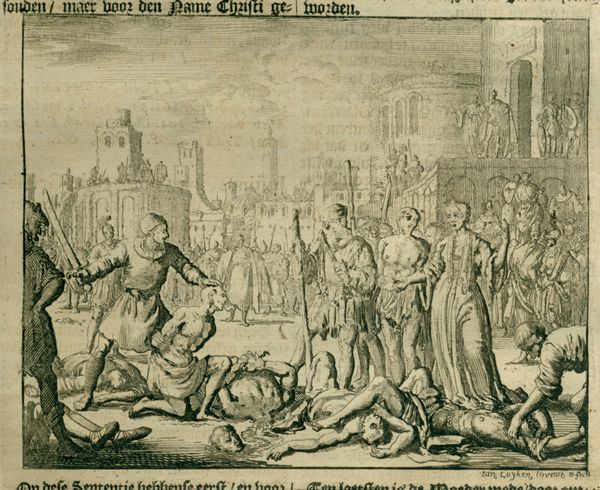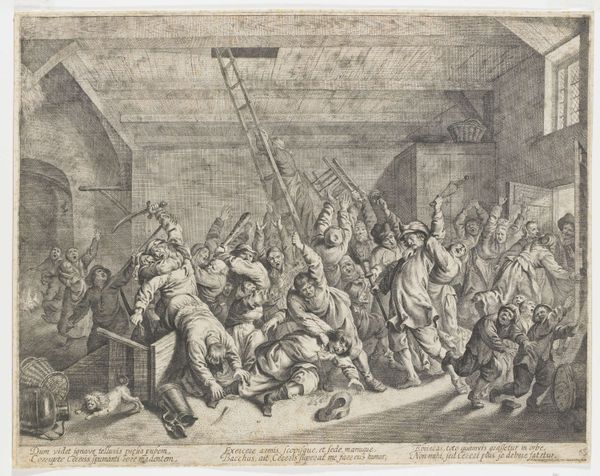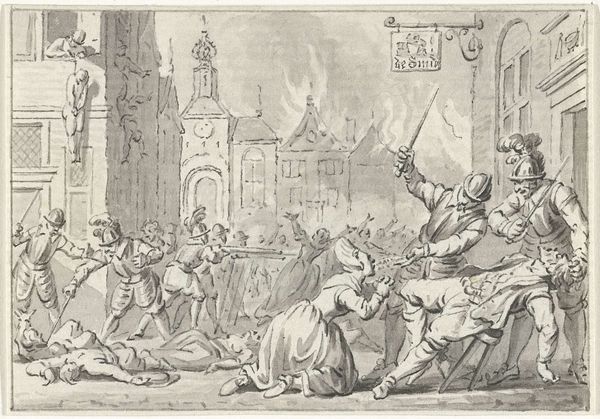
print, engraving
#
narrative-art
#
baroque
# print
#
figuration
#
line
#
history-painting
#
engraving
Copyright: Public domain
Curator: Welcome. Let’s turn our attention to this print, made around 1685 by Jan Luyken, entitled "Martyrdom of Apostle James the Lesser, Jerusalem, AD 63." Editor: Well, my first impression is that it’s intensely disturbing. The artist has captured a brutal act with unsettling detail. It feels almost chaotic. Curator: It is a stark image, and that brutality serves a purpose. Luyken's engravings often depicted martyrdoms, reflecting a period of intense religious and political strife in Europe. He aimed to viscerally convey the suffering of those persecuted for their faith. The era when the work was made coincides with periods of extreme tension between Protestants and Catholics in Europe. Editor: Absolutely. Knowing the context explains the high drama. The rigid architectural backdrop, juxtaposed with the unbridled violence of the figures, creates a jarring contrast, a stark reminder of the conflict between order and barbarism that so often manifests in religious and political persecution. The figure being violently attacked appears as an anti-hero, head bowed in a pose of humble acceptance. Curator: Indeed. And consider the power of the print medium itself. These images were readily reproducible and circulated widely, spreading the message and solidifying group identity. It also shapes collective memory; these works are artifacts about social identity, offering us today tools to talk about collective history, about religious differences. Editor: Exactly, and in terms of current dialogue, these issues of justice, intolerance and collective action around these topics remain as pressing as they did back in 1685. Curator: This piece offers an invitation to remember acts of brutality that should not be repeated and, further, helps create the circumstances and critical perspectives to keep the public sphere healthy. Editor: A strong argument! Ultimately, Luyken’s print serves as a potent reminder of the dangers of fanaticism, but, also of the imperative to speak out and denounce acts that are ethically problematic.
Comments
No comments
Be the first to comment and join the conversation on the ultimate creative platform.
